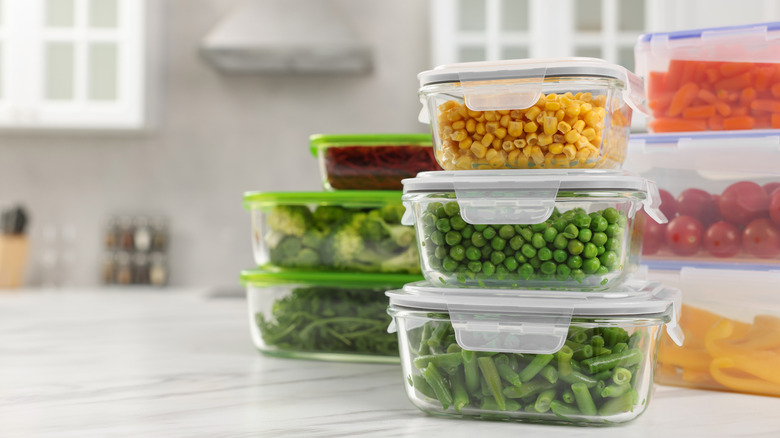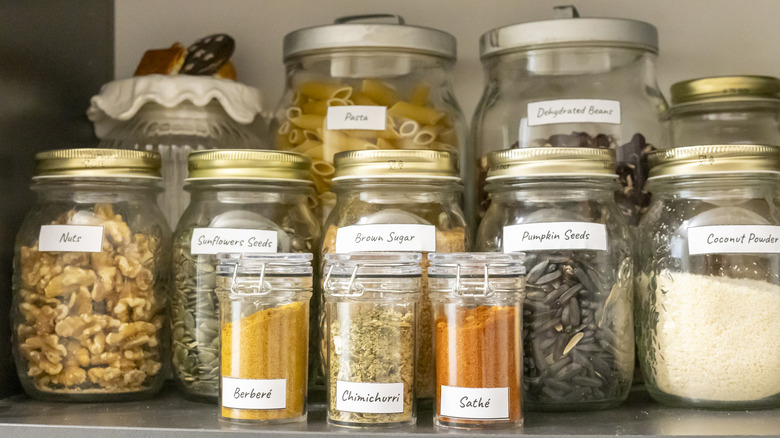Here's Why You Should Always Use Food Storage Containers
Whether you're an avid meal prepper or a frequent customer of DoorDash, you've inevitably faced the situation of having leftovers stuffed into your fridge. Do you keep them in the original pot, covered with tinfoil? Do you use the styrofoam packaging in which they were delivered? Do you find them a week later somehow jammed into a crevice of the fridge, growing their own ecosystem?
Don't be embarrassed — it's happened to everyone. But with food prices on the rise at restaurants and at home, it always hurts to throw away even half a meal. That's why we talked to an expert on organization: Maria Baer, founder of The Baer Minimalist. Turns out there's a better way to make use of your delicious (and expensive) leftover meals. Her top tip? You should always, always use airtight food storage containers to protect and preserve refrigerated items – and this goes beyond leftovers, Baer suggests using these containers for most foods.
"Packaging is often designed for short-term transport and display, not for extended storage," Baer notes. "Airtight containers protect food from exposure to air, moisture, and pests, all of which can degrade food quality."
Avoiding food waste and mold
When you think about food storage containers, you might jump straight to things that are refrigerated. But Maria Baer says they can also be used for pantry staples like coffee, nuts, and flour, which may not become moldy but will turn stale if they're exposed to too much air. Even within a container, some air will leak in and the processes of oxidation and microorganism growth will cause food to spoil over time.
It's also important to note that this airtight environment will only be achieved if the containers are closed properly, which can be different for varying containers. "The trickiest part is making sure that everyone in your home that is accessing these items understands how to open and close the canisters," Baer says. Tupperware may have filed for bankruptcy, but there are a variety of other plastic and glass food storage products ready to help your food stay fresh — just don't get the lids mixed up. Alternatively, you can even store smaller portions of food in mason jars. A final piece of advice? Use painters tape to label each container with the date and contents, or put a sticky note on your fridge with an ongoing list of what leftovers are inside.

